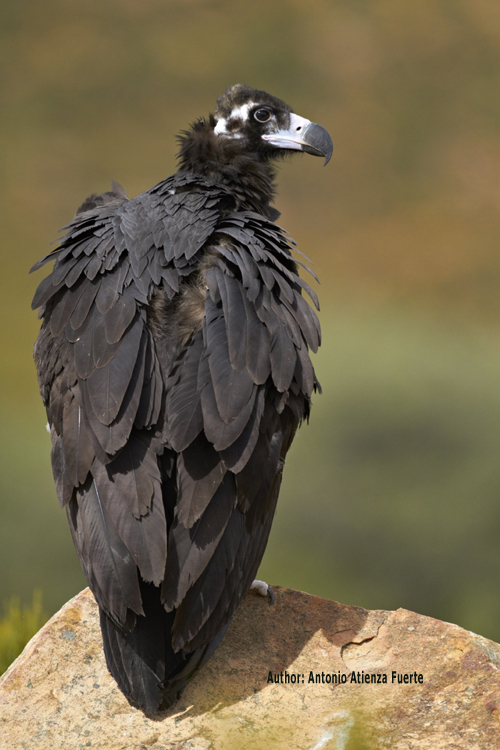Farmland abandonment or "ecological rewilding" shapes species distribution and ecological process ultimately affecting the biodiversity and functionality of ecosystems. Land abandonment predictions based on alternative future socioeconomic scenarios allow foretell the future of biota in Europe. Here, how these forecasts may affect large?scale distribution of the Cinereous vulture, an apex scavenger closely linked to Mediterranean agro?grazing systems, is investigated . Firstly, nest?site and foraging habitat selection is modelled in relation to variables quantifying physiography, trophic resources and human disturbance. Secondly, to what extent land abandonment may affect the life traits of the species is evaluated, and finally how potential future distribution of the species would vary according to asymmetric socioeconomic land?abandonment predictions for year 2040 is determined. Cinereous vultures selected breeding areas with steep slopes and low human presence whereas foraging areas are characterized by high abundance of European rabbits and wild ungulates. Liberalization of the Common Agricultural Policy (CAP) could potentially transform positively 66% of the current nesting habitat, favouring the recovery of mature forest. Contrarily, land abandonment would negatively affect the 63% of the current foraging habitat reducing the availability of preferred food resources (wild European rabbit). On the other hand, the maintenance of the CAP would determine lower frequencies (24%–22%) of nesting and foraging habitat change. Land abandonment may result into opposite effects on the focal species because of the increase in nesting habitats and wild ungulates populations and, on the other hand, lower availability of open areas with poorer densities of European rabbits. Land?abandonment models' scenarios are still coarse?grained; the apparition of new human uses in natural areas may take place at small?sized and medium?sized scales, ultimately adding complexity to the prediction on the future of biota and ecosystems. informacion[at]ebd.csic.es García-Barón et al (2018) How to fit the distribution of apex scavengers into land-abandonment scenarios? The Cinereous vulture in the Mediterranean biome. Divers Distrib https://doi.org/10.1111/ddi.12743









 Las altas temperaturas están provocando que las lagunas y las marismas de Doñana pierdan agua rápidamente
Las altas temperaturas están provocando que las lagunas y las marismas de Doñana pierdan agua rápidamente



